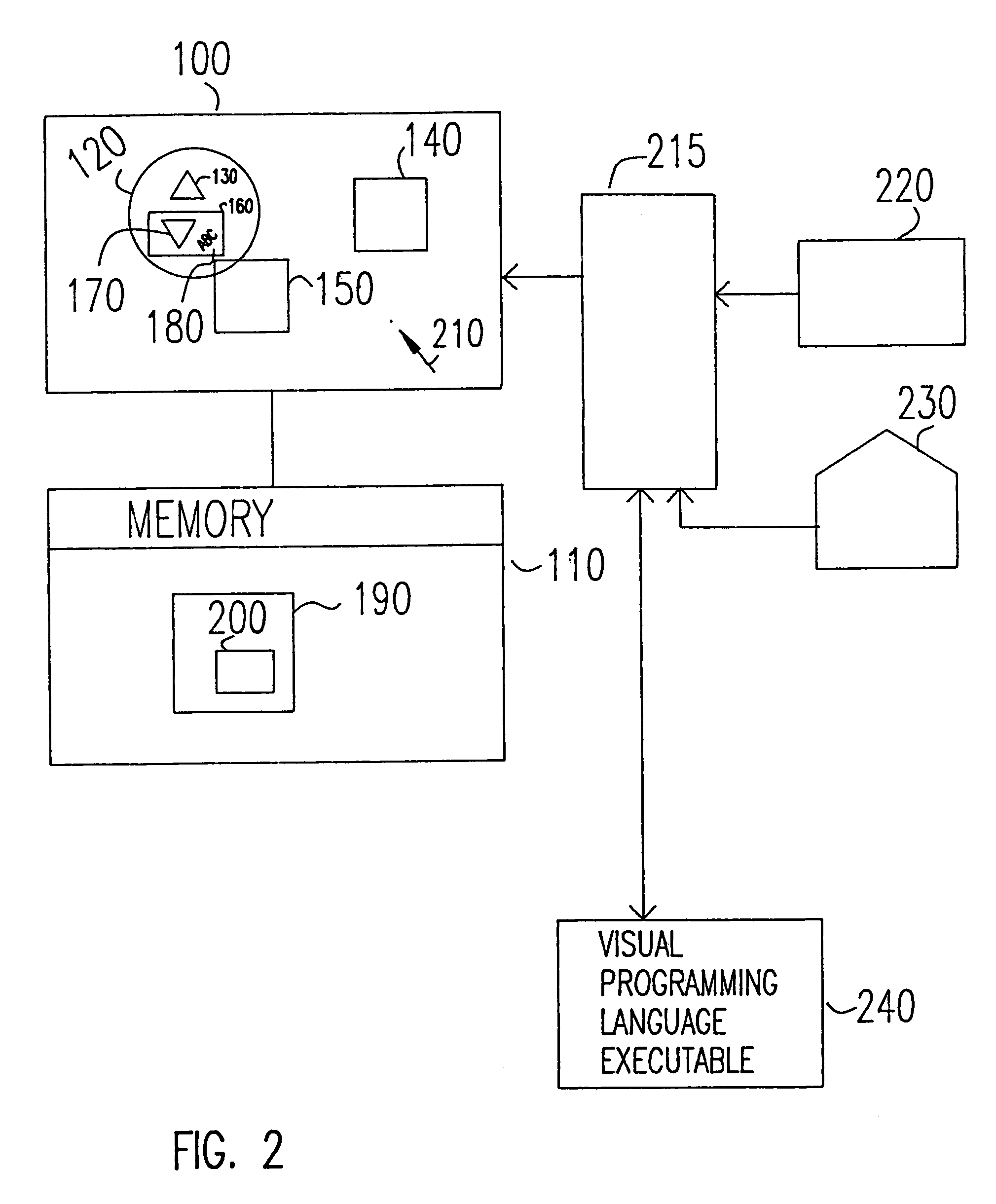Utilizing programming object visual representation for state reflection
a programming object and visual representation technology, applied in the field of visual programming languages and object-oriented programming languages, can solve the problems of its greatest liability, the causal nature of execution quickly gets lost, and the difficulty of decoding wire-based language programs
- Summary
- Abstract
- Description
- Claims
- Application Information
AI Technical Summary
Problems solved by technology
Method used
Image
Examples
Embodiment Construction
[0021]The present invention relates to a method and apparatus for utilizing graphical elements for programming objects to reflect programming state. In preferred embodiments, a number of different types of programming objects may be graphically represented including but not limited to local and global variables. These include variables of common types such as, but are not limited to, integer, real, string, character, and Boolean, as well as untyped objects. They also include objects that are derivatives or composites of these and other variables, such as is taught in object-oriented technology, i.e. programming objects based on the classic object-oriented methodology.
[0022]The present invention refers to graphical elements as the means by which these objects are displayed on a computer. In general, in preferred embodiments of the present invention, these include graphical elements such as, but not limited to, squares, ellipses, and irregular shapes. Properties of these elements incl...
PUM
 Login to View More
Login to View More Abstract
Description
Claims
Application Information
 Login to View More
Login to View More - R&D
- Intellectual Property
- Life Sciences
- Materials
- Tech Scout
- Unparalleled Data Quality
- Higher Quality Content
- 60% Fewer Hallucinations
Browse by: Latest US Patents, China's latest patents, Technical Efficacy Thesaurus, Application Domain, Technology Topic, Popular Technical Reports.
© 2025 PatSnap. All rights reserved.Legal|Privacy policy|Modern Slavery Act Transparency Statement|Sitemap|About US| Contact US: help@patsnap.com



